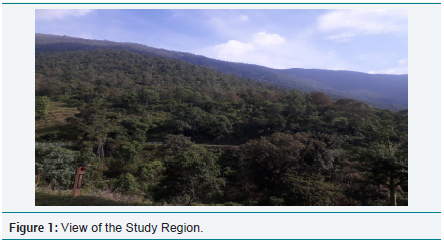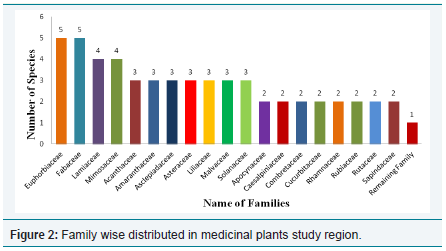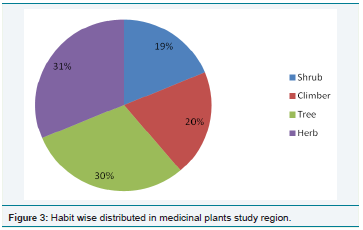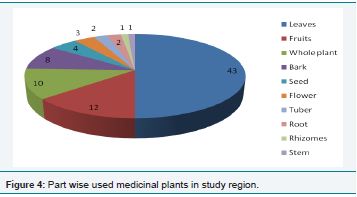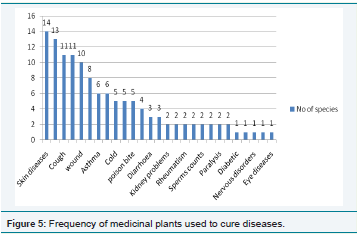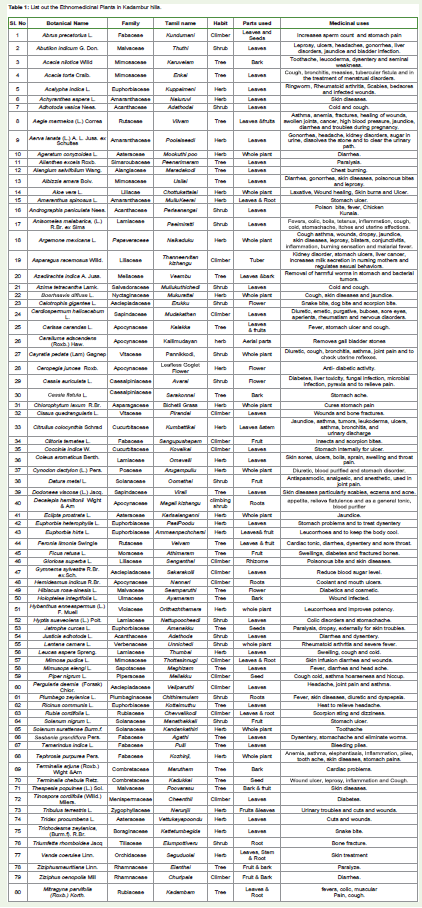Research Article
Ethnopharmacological Studies on the Medicinal Plants Used By Urali Tribes of Kadambur Hills, Sathyamangalam, Erode Disrict, Tamil Nadu, India
Vadivalagan A* and Kannan R
Chikkaiah Naicker College, Department of Botany, India
*Corresponding author: Vadivalagan A, Chikkaiah Naicker College, Department of Botany, Erode, Tamil Nadu, India, E-mail: vadivalagan.guru@gmail.com
Copyright: © Vadivalagan A, et al. 2020. This is an open access article distributed under the Creative Commons Attribution License, which permits unrestricted use, distribution, and reproduction in any medium, provided the original work is properly cited.
Article Information: Submission: 03/03/2020; Accepted: 17/04/2020; Published: 20/04/2020
Abstract
Indigenous traditional knowledge is an integral part of the culture and history of a local community. The present study is aimed to document the ethno
medicinal plants used for various ailments by the Urali tribe and rural people living in Kadambur hills. The research work is mainly focused on gathering
information on traditional usage of plants from the tribal community inhabiting in the area. A total of 80 plant species belonging to 40 families used by them
as herbal medicines to cure various common ailments. 25 plants were herbs followed by 24 trees, 15 shrubs and 16 climbers and leaves 43 followed by fruits
12, whole plant 12, bark 9, roots 8, seed 4, flower 4, stem 2, tuber, rhizomes and aerial part 1. The indigenous information of medicinal plants has important
potential for research and the discovery of modern medicines. The potential ethno medicinal plants could be conserved and further validation need for better
utilization and provisions of the documented knowledge.
Keywords
Ethnobotany; Medicinal plants; Urali tribes; Kadambur hills; Tamil Nadu
Introduction
Nature has been a source of medicinal plants for thousands of
year and an impressive number of modern drugs have been isolated
from natural sources. The World Health Organization has estimated
that 80% of the populations of developing countries still rely on
traditional medicines [1], mostly plant drugs, for their primary health
care needs. The medicinal plant sector has traditionally occupied a
pivotal position in the socio cultural, spiritual and medicinal areas
of rural and tribal families [2]. India is rich in cultural and floristic
diversity and also a store house of ethno-botanical knowledge. Most
of the Indian population still rely on plant-based medicines as they
are abundantly available, economical, and have little or no side-effects
in addition to their cultural acceptability [3-5].
Medicinal plants have gained global importance in alternative
health-care system, for their proven and effective curative properties.
Certain plant drugs used in modern medicine have ethno-botanical
background [6,7]. It is hoped that in the future, ethnobotany may
play an increasingly important role in sustainable development and
biodiversity conservation out of nearly 17,000 higher plants recorded
in India. 7500 are reported to be in Medicinal use by the rural and
tribal communities [8,9].
Ethnobotany and ethno medical studies are today recognized
as the most viable method of identifying new medicinal plants or
refocusing on those earlier reported for bioactive constituents.
Research has been focused on plants for the treatment of diseases
[10-13].
Ethno medicine is one of the systems of medicine that is widely
practiced among the tribal and aboriginal populations of our country
for the treatment of ailments. Primitive societies have depended
on herbal remedies for the treatment of diseases and disorders
since time immemorial [14,15]. They gathered the knowledge from
the environment, inched them and pass them through generation
to generation with or without written documents. Many have
disappeared due to several reasons. Improper documentation, these
resourceful information is left it may be disappeared for ever [16].
To avoid the occurrence of toxic side effects in a long-term usage of
synthetic drugs during treatment of chronic diseases, herbal drugs are
being used widely [17].
Ethnobotanical study in Kadambur hills of Southern India is
limited especially the traditional knowledge of Urali tribes. Recent
considerable attention has been paid to utilize eco-friendly and bio –
friendly plant based product for the preservation and cure of different
human disease. The objective of this study is to assess the diversity
of ethno medicinal plant species used by Urali tribes and villagers in
Kadambur hills Erode district of Tamil Nadu and to document the
traditional medical practices in therapeutic the ailments.
Study area:
Kadambur forests are some of the most beautiful mountain
ranges situated in Eastern Ghats of Tamil Nadu, India. Forest area
is located in Sathyamangalam Taluk, Gobichettipalayam taluk and
Anthiyur taluk which includes 7 villages such as Ekkathur, Yeriur,
Kalkadambur, Keelathur, Thottakombai, Kakkayanur and Kinathadi.
The Geographical position of the study area is latitude 11029”- 1104
N and longitude 76029”-77027” E. The area is reported with rich
biodiversity which receives annual rain fall of about 725 mm. The
area is having minimum elevation 280m and maximum elevation at
1698m. Highest peak reported here is Kambatrayan Giri (1698 m).
The vegetation such as thorny forest, dry deciduous and tropical hill
forest is extensively dominant (Figure 1).Urali tribes:
Urali tribes are inhabitants and are skilled people in honey
collection, food harvesting and medicine preparation. The medicinal
plants are collected from deep forest area and utilize it efficiently.
These people live in forest area in habitat of wild animals and they
are able to sense the smell of the animals nearby or on the way. They
make money by selling honey, wild fruits, milk, ghee etc., these people
build their houses with straw, stones and red soil.Methods
Data collection:
The present investigation was carried out from Kadambur hills of
Sathyamangalam taluk to get information from the tribal practitioners
and also to cross check the information provided by the practitioners
during the earlier visits. The survey was conducted during January
2017 to march 2019. The medicinal plants growing in natural habitats
of Kadambur forest was collected, identified and authenticated with
the help of valid references [18-20]. At the same time plant species
were collected and herbarium sheets were prepared by traditional
method and were deposited in Department of Botany, Chikkaiah
Naicker College, Erode, Tamil Nadu. The details on vernacular name
of the plant, disease they treat, usage of plants were collected from the
tribal practitioners through direct interviews and oral conversations.
The tribal practitioners have a sound knowledge about the medicinal
plants around their place to treat the common diseases in family and
neighborhood.Result
Documentation of Indigenous ethno medicinal knowledge of
Urali tribes inhabiting in Kadambur hills, it has a very rich floral and
faunal diversity. The results of the present study revealed that about
80 plant species are used by Urali tribes for herbal remedy for the
treatment of various ailments. The collected plant species are arranged
in alphabetical order by the botanical name. These species belong to 40
families the most representative being Apocynaceae, Euphorbiaceae
and Fabaceae 5 followed by Lamiaceae and Mimosaceae with 4
species and other families such as Acanthaceae, Amaranthaceae,
Asclepiadaceae, Asteraceae, Liliaceae, Malvaceae and Solanaceae
have three species each and other families are represented with one or
two species each (Figure 2). Previous records have correlated with the
study as many species belong to families Acanthaceae, Asclepiadaceae,
Euphorbiaceae and Solanaceae are the most frequently used families
are used in treatment of various ailments [21]. The mostly used plant
parts among the tribal community are fruit and leaves followed by
seeds, root, bark, whole plant, flowers, stem, rhizome, bulb and gum.
Life form and parts used:
Analysis of habit forms indicates 25 plants were herbs followed
by 24 trees, 15 shrubs and 16 climbers (Figure 3). Among the selected
species, parts used wise contribution was maximum for leaves 43
followed by fruits 12, whole plant 12, bark 9, roots 8, seed 4, flower 4, stem 2, tuber, rhizomes and aerial part 1 (Figure 4). Healers diagnose
diseases based on symptoms but sometime they may also associate
it to spirit. Therefore, preparation of medicines and treatment of
diseases are sometimes accompanied by rituals. Tribal practitioner(s)
use specific plant parts and dosages for treatment of specific ailments.
Plant products are consumed raw or taken as decoction /infusion
(oral treatment) and paste (external application). Fresh leaves, root
and stem were more frequently used when compared to other parts
of the plant. Paste formulations were quite common for external
applications. Earlier ethno botanical studies confirmed that leaves are
the major portion of the plant used in the treatment of diseases [22].The use of various Ethno medicinal plants against the common disease like Skin diseases (18.6 %) followed by Stomach ache (17.3%),
Cough, Ulcer (14.6%), Wound (13.3%), Fever (10.6%), Asthma,
Jaundice (8%), Cold, Headache and Poison bite (6.6%) Leprosy (5.3%),
Diarrhoea, Liver disorders (4%) Kidney problems, Leucoderma,
Rheumatism, Anemia, Sperms counts, Cancer, Paralysis and Piles
(2.6%), Diabetic, Body pain (1%) (Figure 5). The survey showed that
the local tribal are more familiar about the uses of medicinal plants
available in Kadambur forest region. These tribal communities are
depending on medicinal plants to get rid of various disorders instead
of modern medicine. The information is passed from one generation
to the next generation within the communities. Documentation of
these plant species which are enrich in medicinal values is required
which can be further studied for human welfare. Similarly reports
have correlated to the present finding that among the collected 68
plant species from Kalkadambur villages most of the plants have been
reported to treat skin diseases, poisonous bites, stomachache, cold,
cough and diabetes [23]. The information’s collected from this study is
interrelated with the previous reports [21,22,24]. Most of the common
ailments such as wounds, skin diseases, cold, cough and asthma are
treated with hand remedies. Sometimes the healer may mix several
plants as ingredients to cure a single disease but detailed information
on the role of the components used in such formulations are obscure.
As per published literature Azadirachta indica, Cardiospermum
halicacabum, Curcuma longa, Erythrina varigata, Jatropha curcas,
Moringa oleifera, Phyllanthus amarus, Solanum nigrum, Sesbania
grandiflora, Tamarindus indica, Tridax procumbens, Vitex negundo
and Zingiber officinale are regularly intaken by the tribal community
[26-28]. Most commonly occurring and medicinally important plants
are used in treatment of various diseases like asthma, skin diseases,
sex related problems, rheumatism, hepatitis, diabetic, piles, ulcers,
poisonous bites and wound healing etc,. This is consistent with other
general observation which has been reported earlier in relation to
medicinal plants studies by the Indian system of medicines [29-31].
The majority significant aspect of the Urali tribal cured drug is that fresh plant material is used for the preparation of medicine. Alternatively if fresh plant parts are not available, dried plant resources are used. For this reason several plants serve as different remedy to cure a single disease. From this study it is clear that Urali
tribal possess innate ability to discern the character of plants and exploit the plant resources to meet their health care needs (Table 1).
Conclusion
The document shows an elevated degree of ethnobotanical
novelty. Tribal knowledge of the plants and their therapeutic
properties are held only by few people in their group of people. A few
of them have a strong tendency of keeping their knowledge secret.
For the sake of herbal based industry there is a need to promote drug
forms, instead of collecting materials from the wild. Although the
medicinally essential plants are not only conserved and preserved but
indigenous knowledge also preserved for maintaining good health
and sustainable utilization of resources for the present and future
generations.

